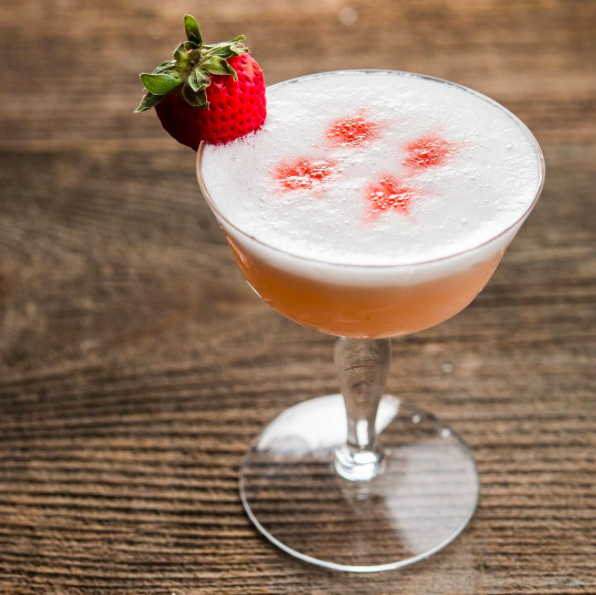
“Ian, you’re the horticulturist?” I ask Ian Rothman, the co-owner of Prospect Heights restaurant Olmsted, over a window table on a scorching hot afternoon. He immediately corrects me. “No, I’m the farmer,” he says. “That was a fancy title for a fancy place.” The fancy place was Atera, where he met chef Greg Baxtrom, the restaurant’s other owner, who’s cooked at Alinea, Blue Hill at Stone Barns and Per Se. With these résumés, it might seem a bit strange that they’ve opened up shop down here on Vanderbilt Avenue, a nice walk from the Brooklyn Museum, but just as with Rothman’s down-to-earth title change, at Olmsted they’re creating something new—a space and menu that’s at once exquisite and relaxed.
Baxtrom grew up on a farm and Rothman once had his own in Massachusetts, so their pairing is natural. “We talked a lot about eating and agriculture, and how restaurants could play a part in both of those things,” Rothman says. “We decided that we wanted to build a farm and restaurant in one.”
And so they have. Before you’re seated at Olmsted (named after legendary landscape architect Frederick Law Olmsted who designed many of the city’s parks), you’re taken through to the very back garden for drinks and snacks like fried fiddlehead ferns or crawfish boil crackers. Around you, Rothman’s plants grow, showcasing what’s on the menu, though the space is too small to provide everything to the kitchen (which is why you might find him at the Greenmarket very early in the morning). ‘This is what lovage looks like. Here’s asparagus,’” he says—a way to interest guests in a piece of the process. There’s room for one vegetable to be grown for the restaurant, though; at the time of the opening, it was radishes.
https://www.instagram.com/p/BHvKu7Xh_aU/
Considering the pedigree and the in-house farmer, one can easily create a mental image of the plates: verdant but charred broccoli rabe, meticulously scattered herbs, crisp brown nests of fried potato. But what sort of cocktails come to mind? Neither a classic list nor a menu of spiked juices would work. Here, they’ve been a bit more creative with how to bring the garden to the glass on their cocktail menu, which launches today.
“When I first started to think about the cocktail menu for Olmsted, I just had a lot of fresh, spring ideas,” bartender Mike Bohn tells me of his idea for a hyper-seasonal approach. “We’re going to do a whole lot of interesting things with stuff that has very short growing seasons.” While working out how their initial selection could really tie into the restaurant’s philosophy, Bohn says Rothman dropped a root of sassafras in front of him that sent him on a whole new path. He took it home and developed a sassafras simple syrup using molasses, which has become an Olmsted Root Beer. When he wanted to create a very savory, spirit-forward martini, he went to the garden and found that nasturtium has a peppery bite. Now their martini is made with nasturtium, Old Tom Gin, and bay leaf tincture. “These ideas snowballed,” he says, and each cocktail is now named for an item from the garden, creating a chain of inspiration from backyard to kitchen to bar.
It’s an approach that makes sense, and one that Rothman says was naturally embraced by their guests from the get-go. Now, though, it’s more fully realized. While awaiting a table, you can drink the Rosemary as it grows nearby, and check out how the fried fiddlehead ferns you’re munching on looked before they hit the cutting board. And you most definitely should.



